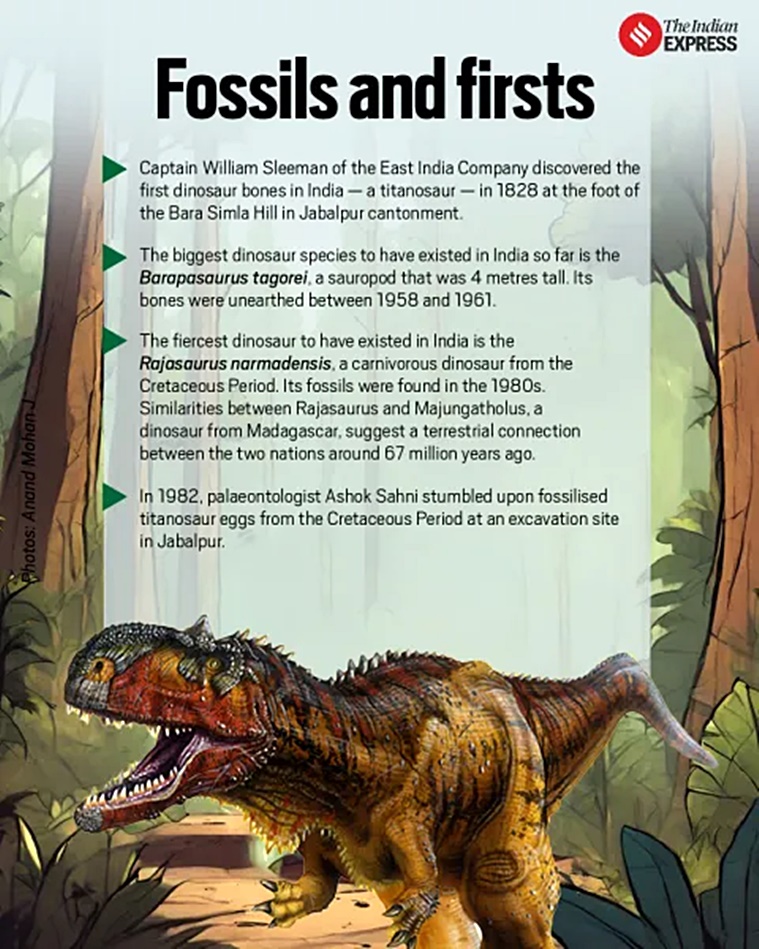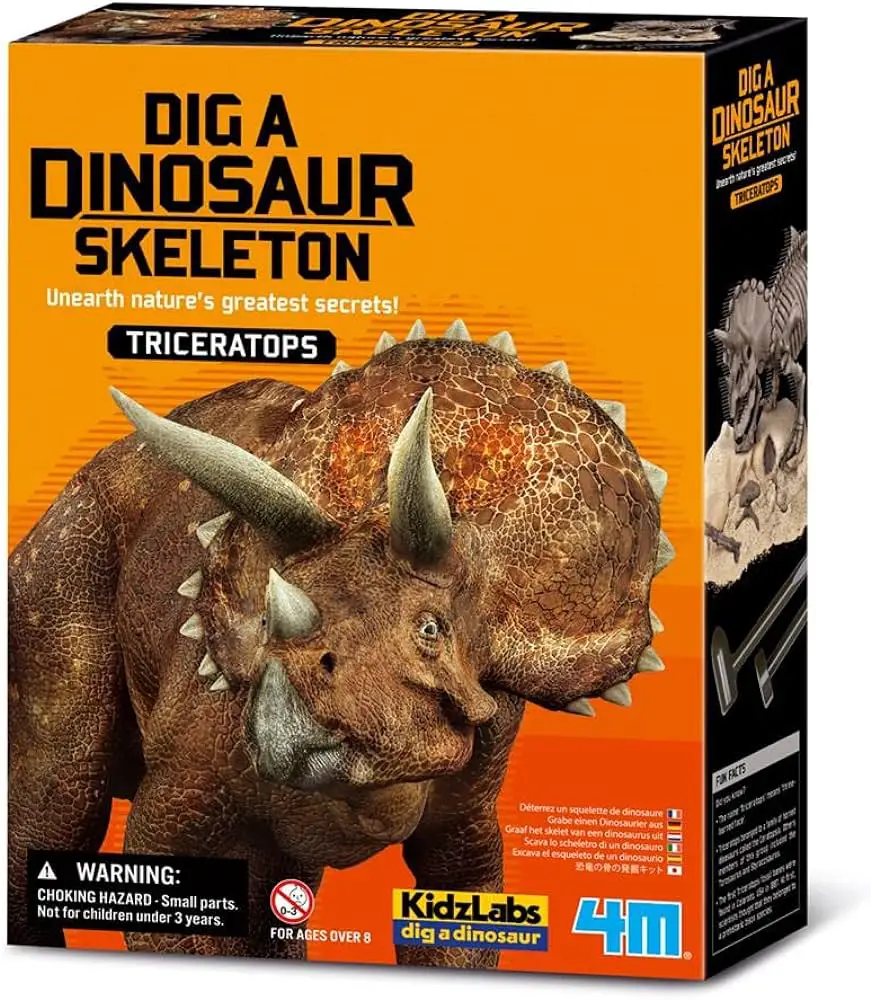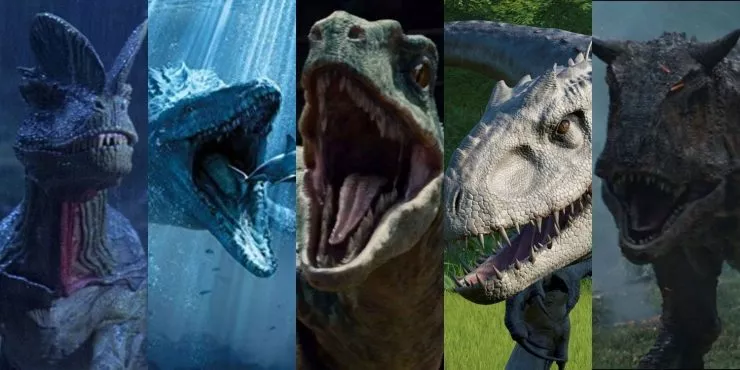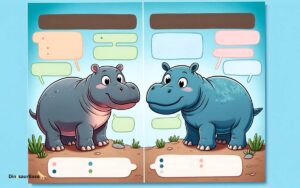Can You Get Dinosaur DNA from Bones? Unearthing Truths
No, you cannot get dinosaur DNA from bones as it degrades over time. DNA’s half-life suggests it’s unreadable after 1.5 million years.
Unearthing the mysteries of the prehistoric world captivates the imagination, yet the realization of retrieving viable dinosaur DNA remains elusive. The degradation of biological materials over millions of years renders such a quest more suitable for science fiction than reality.
Scientists confront immense hurdles in the preservation of genetic material, with the current understanding pinpointing a DNA half-life far shorter than the age of the last dinosaurs. Although organic elements in fossilized bones provide valuable information, the pursuit of full genetic sequences is hindered by time’s relentless decay. Enthusiasts continue to follow emerging research, hoping for advancements that might one day bridge the gap between the fossils we find and the genetic blueprints they once carried.

Credit: twitter.com

The Quest For Dinosaur Dna
The allure of bringing dinosaurs back to life has captivated both scientists and the public for decades. The quest for dinosaur DNA holds the key to unlocking prehistoric secrets that have been buried for millions of years. Imagine stepping into the world of these magnificent creatures, understanding their biology, and maybe even witnessing a living dinosaur. But what is the reality behind this ambitious mission to extract genetic material from ancient bones?
Popular Myths Vs. Scientific Reality
Popular culture has painted a vivid picture of dinosaur cloning, often overlooking the scientific challenges. Movies like “Jurassic Park” show DNA recovery as a simple task, but the intricate scientific process tells a different story. Let’s unravel the myths and face the realities of dinosaur DNA research.
- Dinosaurs cannot be brought back through frog DNA.
- Amber-trapped mosquitoes are unlikely DNA sources.
- Science fiction differs greatly from actual scientific possibilities.
Limitations Of Dna Preservation
DNA deterioration is a formidable obstacle in paleogenetics. Understanding the factors limiting DNA preservation is vital in evaluating the possibility of extracting dinosaur DNA.
| Factor | Impact on DNA |
|---|---|
| Time | The age of dinosaur remains challenges DNA’s structural integrity. |
| Environmental Conditions | Heat, moisture, and microbial activity contribute to DNA breakdown. |
| Chemical Decay | Over time, DNA bonds break down, leading to fragmentation. |
Fossilized bones are not the same as preserved remains. Unlike mammoths found in ice, dinosaur bones are mineralized, leaving no organic material behind. The likelihood of finding intact DNA strands decreases with each passing millennium. Myths from movies aside, the quest for dinosaur DNA marches on, though steeped in scientific scrutiny and realism.

Credit: www.amazon.com
Paleogenetics And Ancient Dna
The quest for understanding the secrets of extinct species like dinosaurs takes us into the realms of paleogenetics and ancient DNA. Scientists seek glimpses into the distant past, asking the age-old question: is it possible to retrieve dinosaur DNA from fossilized bones?
Basics Of Dna Degradation
DNA, the blueprint of life, degrades over time. Environmental factors such as temperature, bacteria, and chemical reactions break down these valuable strands.
- Oxygen and water speed up degradation.
- Molecules scatter over millennia.
- Complete DNA strands become rare.
The chance of finding intact dinosaur DNA diminishes with each passing year.
Breakthroughs In Ancient Dna Technology
New technologies in DNA sequencing and analysis have sparked a revolution in studying ancient life forms.
| Year | Breakthrough |
|---|---|
| 1984 | First ancient DNA sequenced |
| 2001 | Neanderthal mitochondrial DNA mapped |
| 2013 | Horse genome from 700,000-year-old bone |
These advances fuel our hope of uncovering dinosaur DNA. Yet, challenges remain due to the extensive time gap.
Instruments of high precision detect minute DNA fragments. Detailed analysis can reconstruct genetic codes.
History Of Dinosaur Bone Analysis
The quest to learn from the prehistoric realms where dinosaurs once roamed has long fascinated scientists and enthusiasts alike. Dinosaur bone analysis opens a door to the ancient past, sparking questions whether DNA could unlock deeper secrets. Exploring these ancient giants through their fossils offers valuable insights into their lives millions of years ago.
Initial Discoveries And Theories
When the first dinosaur bones surfaced, they ushered in a new era of paleontology. Initial theories focused on understanding dinosaur structures and lifestyles. Scientists examined bones manually, using simple tools to clean and study the fossilized remains.
- Observations noted bone shapes
- Years of painstaking excavation followed
- Fossil assembly provided a clearer picture of dinosaur anatomy
The fragmentary nature of fossils posed challenges. Early researchers speculated about dinosaur behavior and environment based on bone formation and locations. These initial analyses laid the foundation for modern research techniques.
Technological Advancements In Fossil Examination
Technological leaps have revolutionized the field. Sophisticated tools enhance fossil evaluation, going beyond the surface to probe the internal dynamics of ancient bones. Computerized tomography (CT) scans offer detailed cross-sectional images of fossils, without damaging them.
| Technology | Impact |
|---|---|
| CT Scans | Non-destructive internal analysis |
| Spectroscopy | Elemental composition examination |
| Molecular Paleontology | DNA preservation evaluation |
Contemporary analysis techniques such as protein sequencing and molecular paleontology raise hopes of DNA retrieval. Despite degradation over time, scientists explore possibilities by studying preserved materials within the bones. Each new method brings us closer to reconstructing a picture of the long extinct dinosaurs and possibly, one day, their DNA.

Credit: www.thefactsite.com
Challenges In Recovering Dinosaur Dna
The quest to recover dinosaur DNA is fraught with substantial obstacles. Despite the allure of bringing the prehistoric past back to life, scientists face significant hurdles in extracting genetic material from ancient remains. Below we delve into the major challenges associated with this endeavor, underscoring why dinosaur DNA continues to elude our grasp.
Impact Of Environmental Factors On Dna
DNA degradation over time is inevitable, especially when considering the age of dinosaur bones, which span millions of years. Environmental factors play a critical role in this degradation process. Elements such as moisture, heat, and microbial activity work in tandem to break down DNA strands, rendering them fragmented or even entirely unusable for genetic analysis.
- Temperature fluctuations can cause repeated expansion and contraction in bone material, damaging DNA.
- Water can hydrolyze DNA bonds, leading to molecule disintegration.
- Oxygen exposure contributes to oxidative reactions that fragment the DNA.
Contamination Issues In Paleogenetic Research
Another significant hurdle is contamination. Modern DNA can easily infiltrate ancient specimens, clouding the authenticity of any genetic data retrieved. Museums, labs, and even excavation sites are potential contamination battlegrounds, where distinguishing between ancient and modern DNA becomes a meticulous task.
| Contamination Source | Challenge |
|---|---|
| Handling by Researchers | Accidental transfer of modern DNA to samples |
| Extraction Tools | Cross-contamination from previous DNA samples |
| Storage Facilities | Possible introduction of external DNA over time |
In paleogenetic research, meticulous protocols and sterile environments are essential to mitigate contamination risks. Scientists often employ special cleanrooms and wear protective clothing designed to keep modern DNA at bay. Despite these measures, discerning ancient DNA’s true origins remains a daunting task.
Alternatives To Dinosaur Dna
The quest for dinosaur DNA has inspired scientists for decades. Yet, extracting viable genetic material from fossils millions of years old comes with significant challenges. The DNA’s half-life—its degradation over time—is too short to survive from the age of dinosaurs. Thus, paleontologists and geneticists turn to creative alternatives to unlock the secrets of these prehistoric giants.
Proteins And Soft Tissues In Fossils
Though DNA’s persistence is fleeting, proteins and soft tissues offer clues to the past. Researchers have discovered cases where soft tissues, like collagen, survive in fossils. These proteins can tell us much about a dinosaur’s biology. For instance, studies of collagen have allowed scientists to reconstruct the evolutionary relationships between species.
- Fossilized feathers reveal color and behavior.
- Teeth and bones inform dietary habits.
- Nest sites provide insight into social structures.
Scientists also use the amino acid sequences in proteins to infer genetic information. These sequences help us understand how dinosaurs might be related to modern animals.
Innovations In Reverse Engineering
Where direct DNA evidence is absent, scientists use a technique known as reverse engineering. This involves taking genetic information from a dinosaur’s descendants—like birds—and working backward. They compare traits shared between birds and dinosaurs, filling in the evolutionary gaps.
Reverse engineering offers a map to what dinosaur genomes could have looked like:
- Identify traits in birds linked to dinosaurs.
- Analyze contemporary reptile DNA for ancient traits.
- Combine this data to hypothesize dinosaur genetics.
Technological breakthroughs aid in visualizing dinosaur genetics without direct DNA. Computer modeling predicts how genes may manifest in physical traits. These insights turn proteins and reverse-engineered DNA into a window to the past.
Implications For Science And Education
The possibility of retrieving DNA from dinosaur bones sparks excitement for both science and education. This breakthrough could turn the pages of textbooks and introduce new chapters of discovery. Imagine a classroom where students can explore the prehistoric world beyond bones and fossils.
Revising Paleontology Curriculums
Paleontology courses will need significant updates. Students could soon examine genetic data alongside fossilized remains.
- Interactive Learning: DNA analysis can make lessons more hands-on and engaging.
- New Course Materials: Textbooks and labs would include DNA sequencing methods.
- Broader Perspectives: Understand dinosaurs’ behaviors, environments, and evolution.
Future Prospects Of Dinosaur Research
Advancements in DNA retrieval could revolutionize our understanding. The future of dinosaur research looks bright and promising.
| Potential Discovery | Impact |
|---|---|
| Dinosaur Coloration | Recreate accurate depictions for educational content. |
| Genetic Links | Trace lineage between dinosaurs and modern species. |
| Behavioral Insights | Teach how they interacted within their ecosystems. |
These prospects are not mere fantasies but potential realities that can inspire new generations of scientists and educators.
Frequently Asked Questions On Can You Get Dinosaur Dna From Bones
Can Humans Get Dino Dna?
Human DNA extraction from dinosaurs is currently not possible due to the ancient creatures’ DNA degradation over millions of years.
Can You Extract Dna From Bones?
Yes, you can extract DNA from bones. This process often requires specialized techniques to handle the degraded DNA found in skeletal remains.
Can Dna Be Extracted From Fossil Bones?
Yes, DNA extraction from fossil bones is possible but depends on the bone’s age and preservation conditions. Older or poorly preserved fossils may not yield DNA.
Is It Possible To Bring Back Dinosaurs With Dna?
Bringing back dinosaurs through DNA is currently impossible due to degradation over millions of years. Even the best-preserved specimens lack viable genetic material. Advances in science might change this, but for now, dinosaur resurrection remains fictional.
Conclusion
Unraveling the mysteries of the past remains a challenge, but extracting dinosaur DNA from bones is beyond our current capabilities. Advances in technology may one day change this narrative, offering new insights into prehistoric life. Until then, paleontologists continue piecing together history with the fragments time has spared.
Keep the quest for knowledge alive; let’s see what the future holds for unlocking the secrets of dinosaurs.




